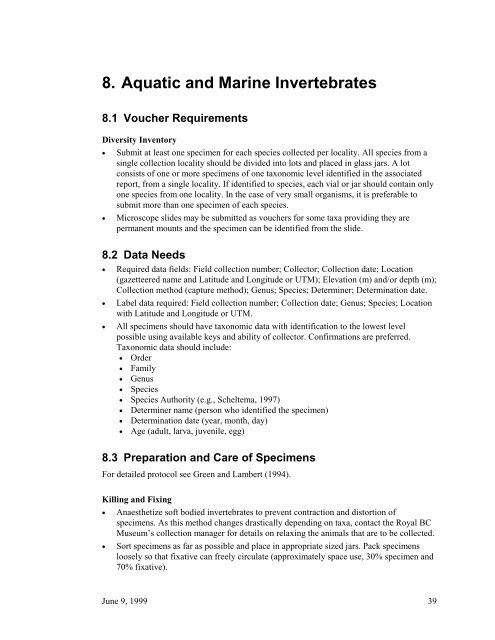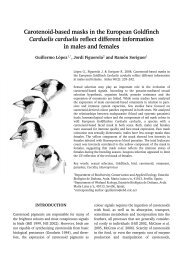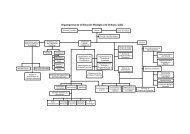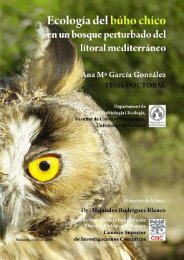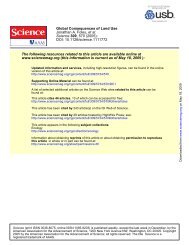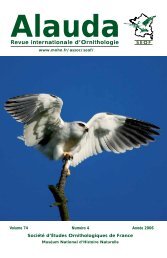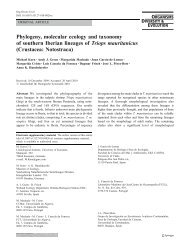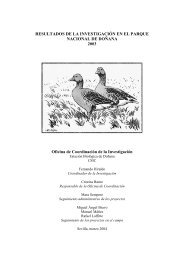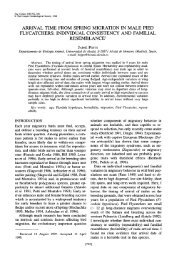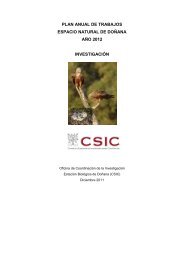Voucher Specimen Collection Preparation Identification and Storage ...
Voucher Specimen Collection Preparation Identification and Storage ...
Voucher Specimen Collection Preparation Identification and Storage ...
You also want an ePaper? Increase the reach of your titles
YUMPU automatically turns print PDFs into web optimized ePapers that Google loves.
8. Aquatic <strong>and</strong> Marine Invertebrates<br />
8.1 <strong>Voucher</strong> Requirements<br />
Diversity Inventory<br />
• Submit at least one specimen for each species collected per locality. All species from a<br />
single collection locality should be divided into lots <strong>and</strong> placed in glass jars. A lot<br />
consists of one or more specimens of one taxonomic level identified in the associated<br />
report, from a single locality. If identified to species, each vial or jar should contain only<br />
one species from one locality. In the case of very small organisms, it is preferable to<br />
submit more than one specimen of each species.<br />
• Microscope slides may be submitted as vouchers for some taxa providing they are<br />
permanent mounts <strong>and</strong> the specimen can be identified from the slide.<br />
8.2 Data Needs<br />
• Required data fields: Field collection number; Collector; <strong>Collection</strong> date; Location<br />
(gazetteered name <strong>and</strong> Latitude <strong>and</strong> Longitude or UTM); Elevation (m) <strong>and</strong>/or depth (m);<br />
<strong>Collection</strong> method (capture method); Genus; Species; Determiner; Determination date.<br />
• Label data required: Field collection number; <strong>Collection</strong> date; Genus; Species; Location<br />
with Latitude <strong>and</strong> Longitude or UTM.<br />
• All specimens should have taxonomic data with identification to the lowest level<br />
possible using available keys <strong>and</strong> ability of collector. Confirmations are preferred.<br />
Taxonomic data should include:<br />
• Order<br />
• Family<br />
• Genus<br />
• Species<br />
• Species Authority (e.g., Scheltema, 1997)<br />
• Determiner name (person who identified the specimen)<br />
• Determination date (year, month, day)<br />
• Age (adult, larva, juvenile, egg)<br />
8.3 <strong>Preparation</strong> <strong>and</strong> Care of <strong>Specimen</strong>s<br />
For detailed protocol see Green <strong>and</strong> Lambert (1994).<br />
Killing <strong>and</strong> Fixing<br />
• Anaesthetize soft bodied invertebrates to prevent contraction <strong>and</strong> distortion of<br />
specimens. As this method changes drastically depending on taxa, contact the Royal BC<br />
Museum’s collection manager for details on relaxing the animals that are to be collected.<br />
• Sort specimens as far as possible <strong>and</strong> place in appropriate sized jars. Pack specimens<br />
loosely so that fixative can freely circulate (approximately space use, 30% specimen <strong>and</strong><br />
70% fixative).<br />
June 9, 1999 39


